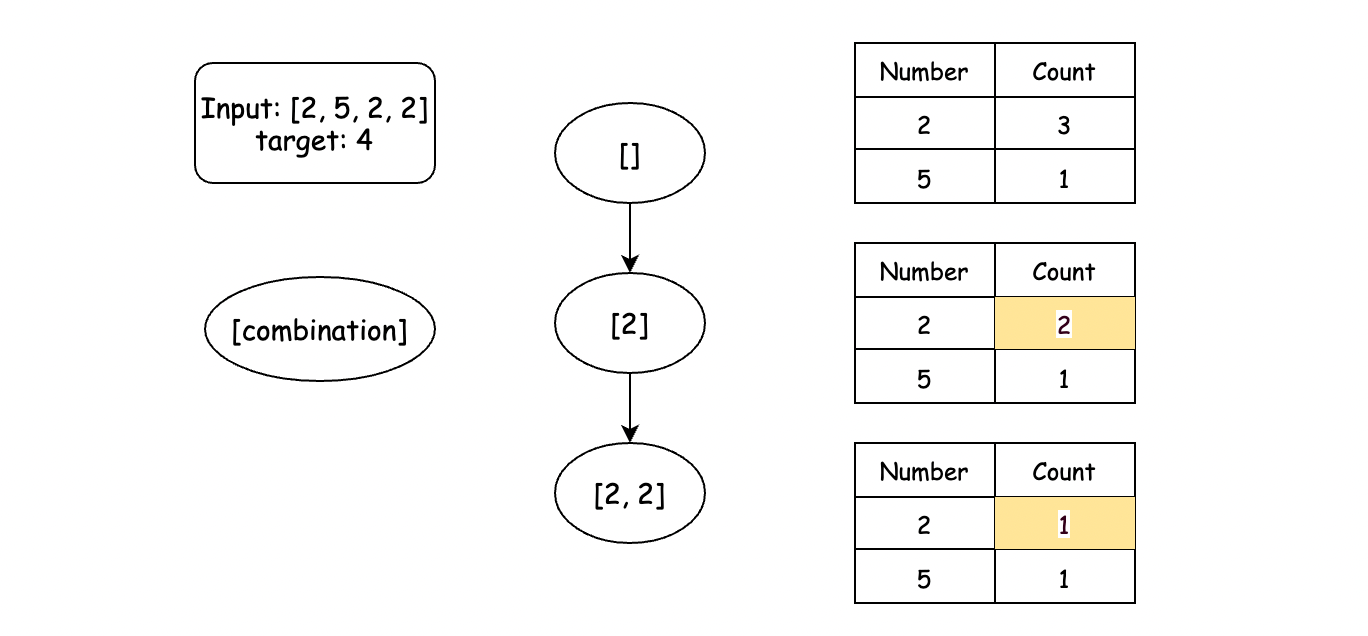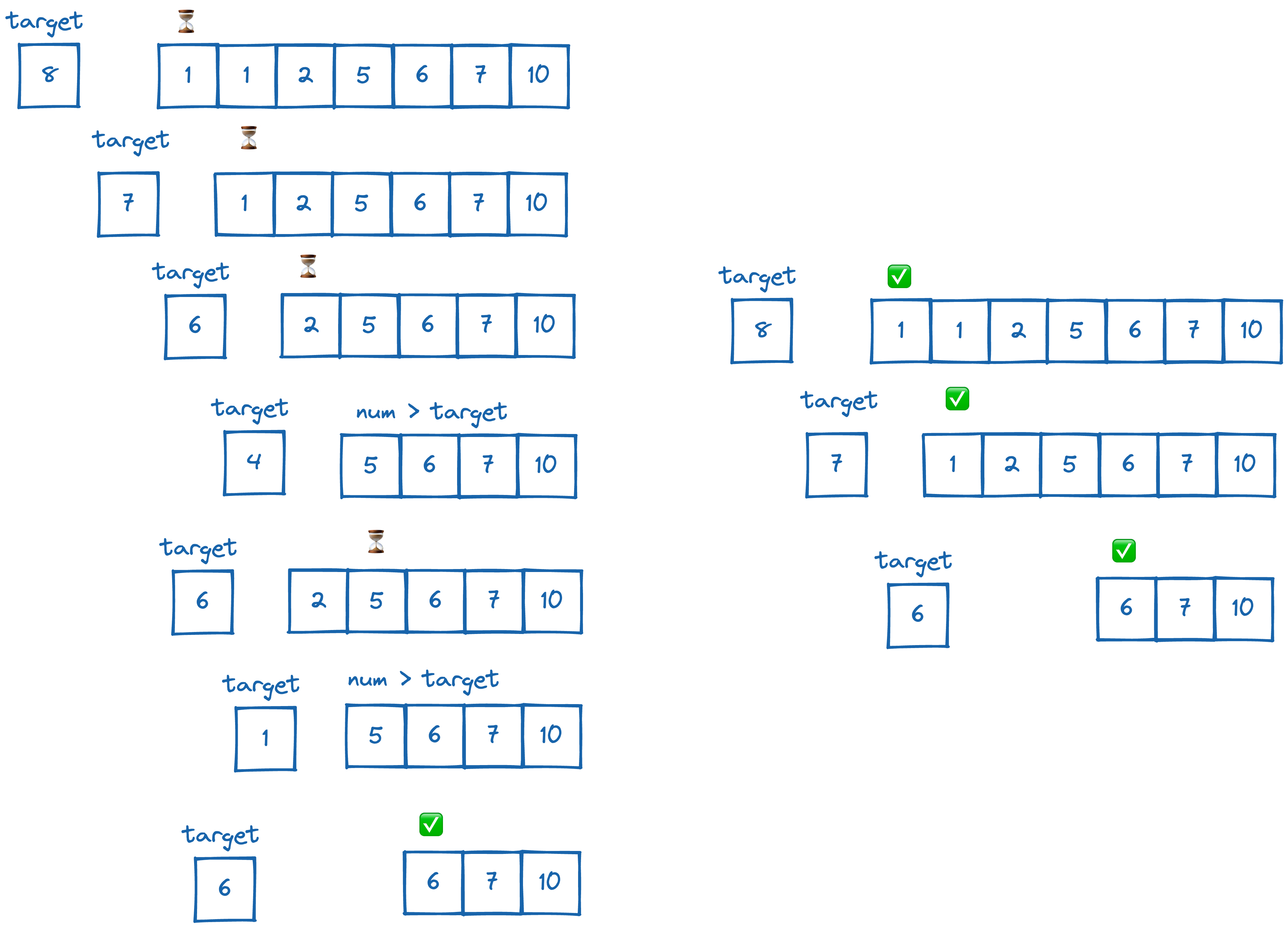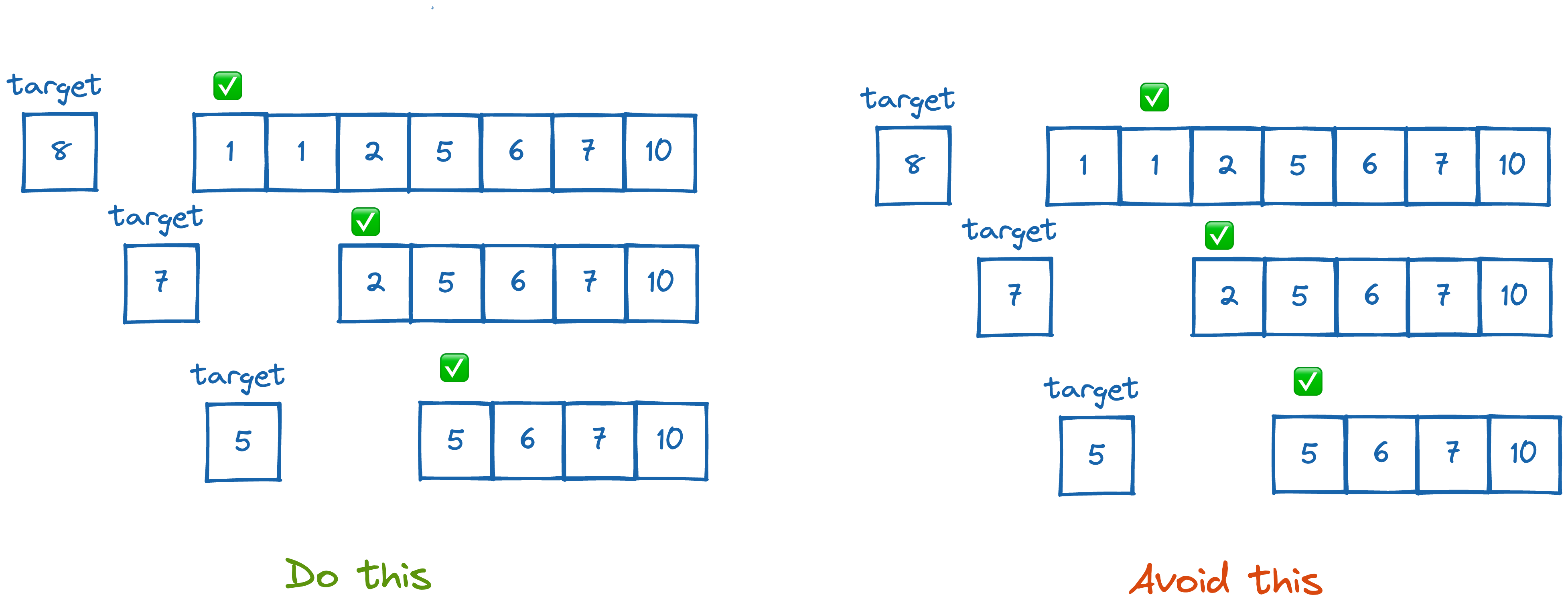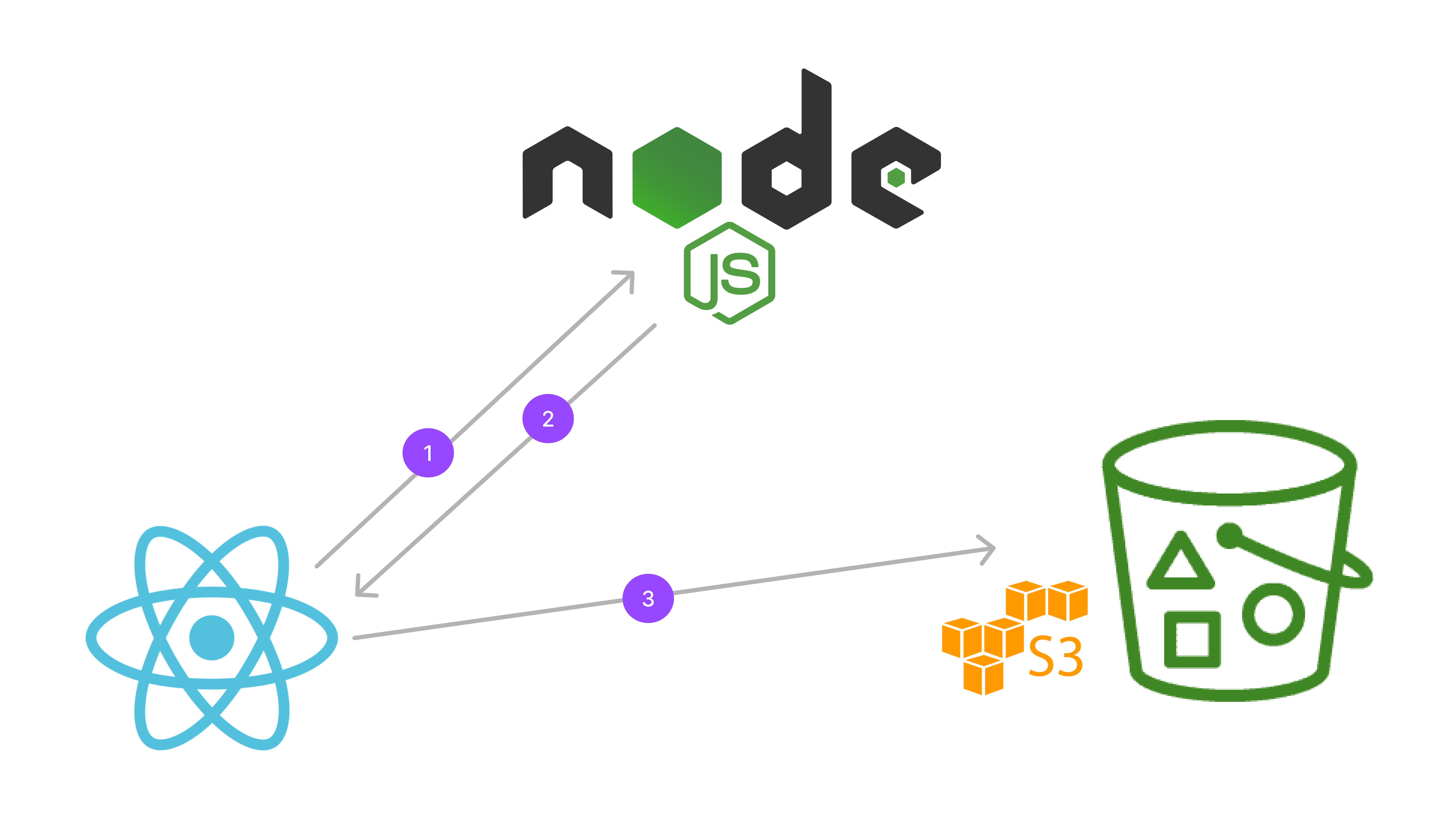Apr 22, 2023 · 25 mins read
Combination Sum II
Leetcode Problem to find all possible sets of numbers that sum up to a given target numberUmakant Vashishtha

Combination Sum II
Difficulty: Medium
2023-10-15-13-43-50.png
Go ahead and read the problem statement
Given an array of positive integers (say candidates) and another number target, possibly with duplicates,
we need to find all possible sets of numbers that sum up to a given target number.
Example:
Candidates: [10,1,2,7,6,1,5]
Target: 8
Answer:
[
[1,1,6],
[1,2,5],
[1,7],
[2,6],
]
A basic solution would be to have all possible combinations. But that would not be optimal and also give duplicate sets.
Sorting this array would help us in deciding when to stop and hence optimizing the solution.
[10,1,2,7,6,1,5] // original array
[1,1,2,5,6,7,10] // after sorting
Now we can traverse through the array and decide whether or not to use a number in forming the sum.
Based on the selected number we can have different set of numbers
from the rest of the array for the remaining sum.
This gives us the idea of solving sub-problems,
and thus we will go for a recursive solution (top-down approach).
Let’s do a dry run before we get to coding.
target: 8,
numbers to use: [1,1,2,5,6,7,10]
We can decide to use 1
remaining target: 7
remaining numbers to use [1,2,5,6,7,10]
At each stage of recursion, we loop through the numbers to use each number, and reduce the overall sum, and recusively call the function to select next numbers.
Take a look at this diagram to understand how we get a solution.

We will store the used numbers in an array usedValues,
and once the target reduces to 0 we will add that to the solution set and end the recursion.
Also if we choose a set of numbers where the required sum can’t be achieved, we will end the recursion.
It is important to realise that in each stage of recusion, we are choosing only one number.
var combinationSum2 = function (candidates, target) {
let solutionSets = [];
candidates = candidates.sort((a, b) => a - b);
recursiveCheck(candidates, 0, target, [], solutionSets);
return solutionSets;
};
function recursiveCheck(
candidates,
position,
target,
usedValues,
solutionSets
) {
for (let i = position; i < candidates.length; i++) {
let num = candidates[i];
if (num > target) {
return;
} else {
let newTarget = target - num;
let newUsedValues = [...usedValues, num];
if (newTarget == 0) {
solutionSets.push(newUsedValues);
return;
} else {
recursiveCheck(
candidates,
i + 1,
newTarget,
newUsedValues,
solutionSets
);
}
}
}
}
You will find that the current solution does not prevent duplicate sets. We will see the following set of numbers appearing twice because we chose 1 at the same level again.
[1,2,5]
[1,2,5]

Now the interesting part of the problem:
How to avoid duplicates
Duplicates will always happen as the same number in same order:
1, 2, 5
1, 2, 5
To avoid duplicates, we can make sure that at each stage of recursion, we don’t want to choose the same number again, i.e., in the for loop, if we reach the same number as the previously selected one we can prevent recursing with that number again.

So the final solution will be something like this.
function recursiveCheck(
candidates,
position,
target,
usedValues,
solutionSets
) {
let pre = -1;
for (let i = position; i < candidates.length; i++) {
let num = candidates[i];
if (num > target) {
return;
} else {
if (num == pre) {
continue;
}
pre = num;
let newTarget = target - num;
let newUsedValues = [...usedValues, num];
if (newTarget == 0) {
solutionSets.add(newUsedValues);
return;
} else {
recursiveCheck(
candidates,
i + 1,
newTarget,
newUsedValues,
solutionSets
);
}
}
}
}
Similar Articles

Elevator Algorithm
Implementation of Elevator Algorithm in Typescript
May 03, 2023 · 34 mins

Using Signed URLs in React | File Upload using AWS S3, Node.js and React - Part 3
Building the react application to upload files directly to AWS S3 using Signed URLs generated from our node.js application.
Oct 15, 2023 · 15 mins

Setting Up Node.js App | File Upload using AWS S3, Node.js and React - Part 2
Setting up Node.js application and use AWS SDK to generate S3 Signed URL using AWS access credentials that will be used in our react application to upload files directly.
Oct 07, 2023 · 20 mins
